YAN GROUP
Research Areas
(1) Application of Mesoionic Carbenes (MICs) and Their Derivatives
N-heterocyclic carbenes play an important role in coordination chemistry, homogeneous catalysis, optoelectronic materials and so on. In the past five years, we have been mainly engaged in the design and synthesis of novel N-heterocyclic carbenes, such as mesoionic carbenes (MICs), and we have expanded the application of MICs and developed new organic catalytic reactions, mainly including (1) To design and synthesize new MICs and their main group adducts; (2) to developapplication of MICs in organo-catalysis; (3) to develop new catalytic reactions and new luminescent mechanisms of MIC-metal complexes.
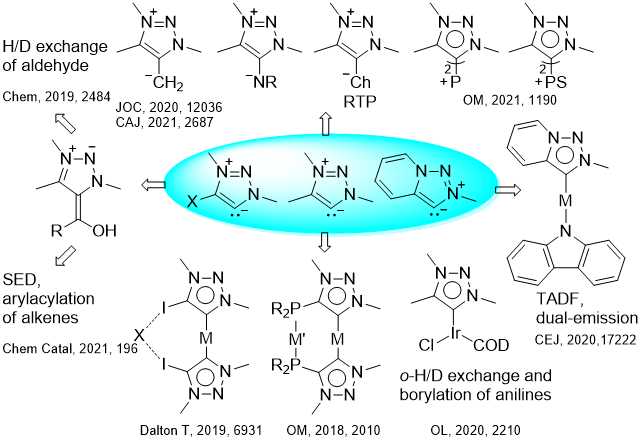 |
(2) Hydrogen Isotope Exchange (HIE) Reaction
Incorporation of deuterium atoms to a specific molecule has been an advanced research focus in recent years, for the broad application of deuterated compounds in studying biological and chemical processes and mass spectrometry. In particular, the special ability to change the ADME properties of the known drug candidates, which has paved the way for numerous breakthroughs in pharmacokinetics as well as in pharmaceutical industry. Transition metal-catalyzed hydrogen isotope exchange (HIE) was one of the most important ways to deuterated compounds. Although a number of selective HIE reaction have been reported, this high selectivity was usually limited to simple substrates with one directing group. Selective deuteration of complex substrates with multiple functional groups were still rare. In our group, we are working on the selective HIE reactions of bio-active molecules.
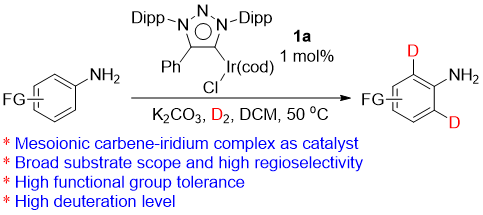 |
 |
 |
(3)Synthesis and Photophysicalproperties of Carbon Nanomaterials
Macrocyclic aromatic compounds (MACs) have attracted considerable attention due to their stability, π-conjugated structures and optoelectronic properties. The modification of MACs can not only bring about the diversification of molecular structure, but also change the properties of photoelectric materials. We have successfully embedded different units into carbon nanorings, such as thiophene, selenophene, 3,4-ethylenedioxy thiophene, and m-phenylene. Interestingly, we recently reported the mechanochromic property of 2,6-bis(4-biphenyl)isonicotinic acid, which features frustrated Brönsted pair in the crystalline form and classical Brönsted pair after grinding.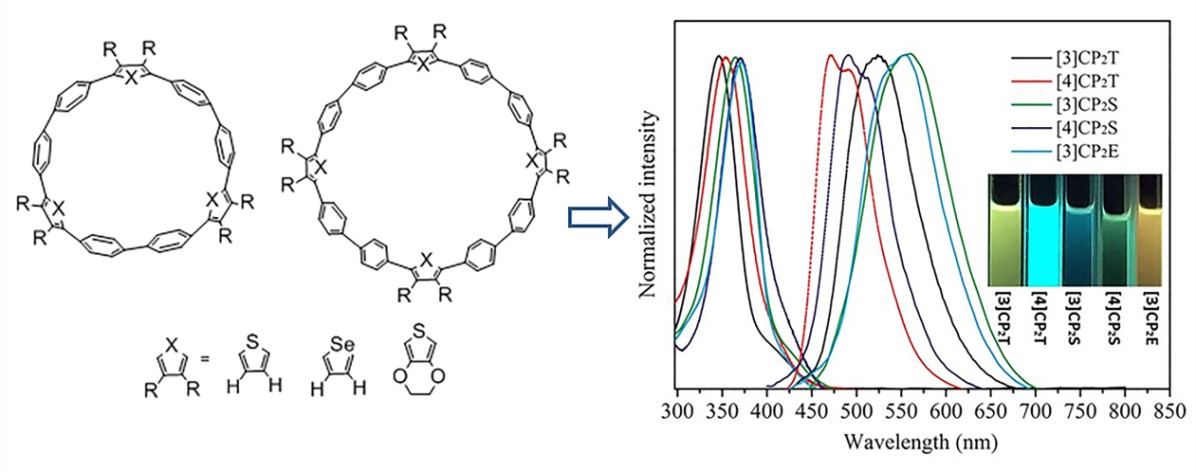 |
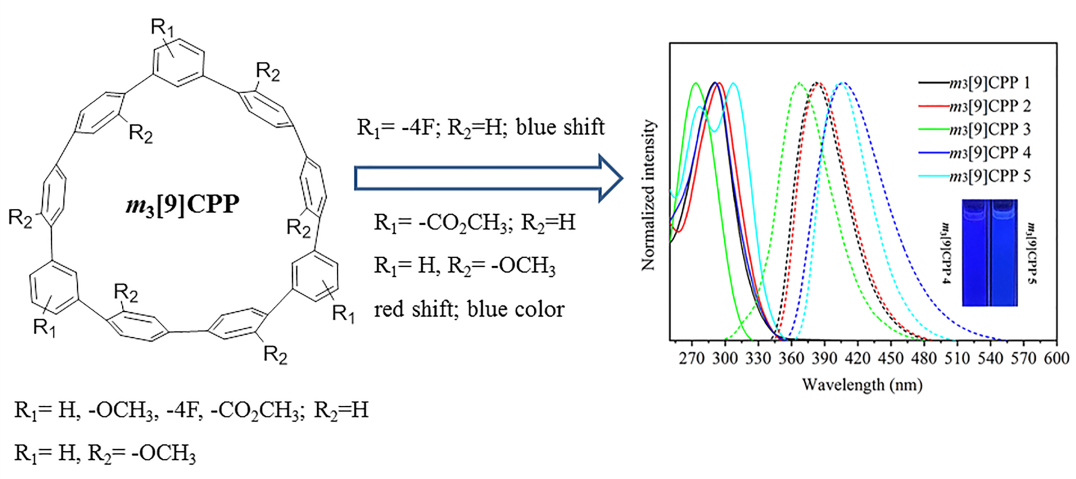 |
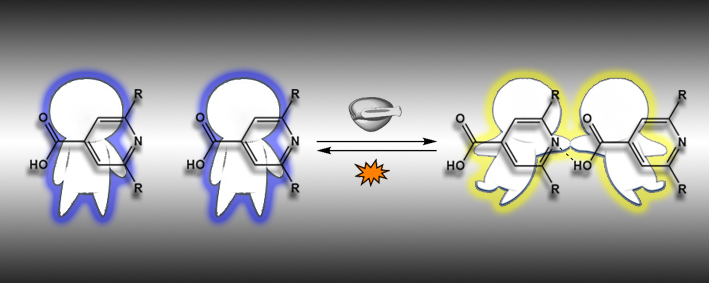 |
|
TOP |